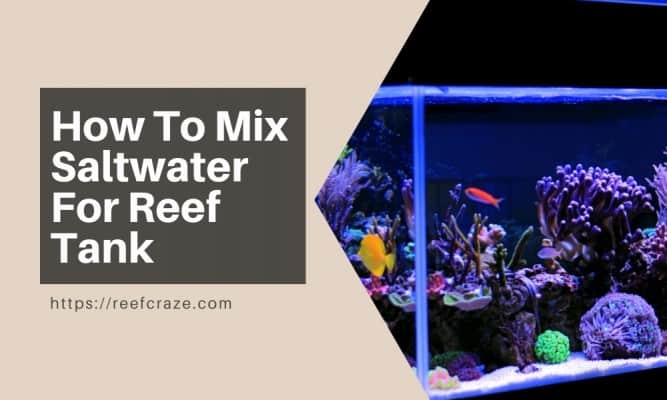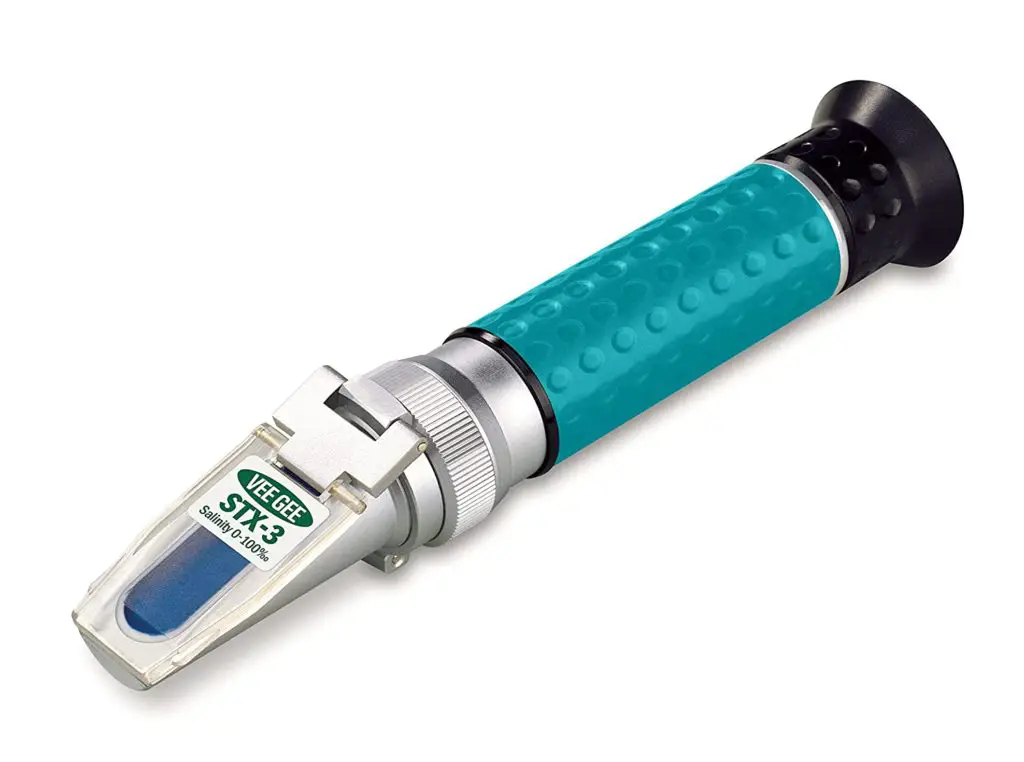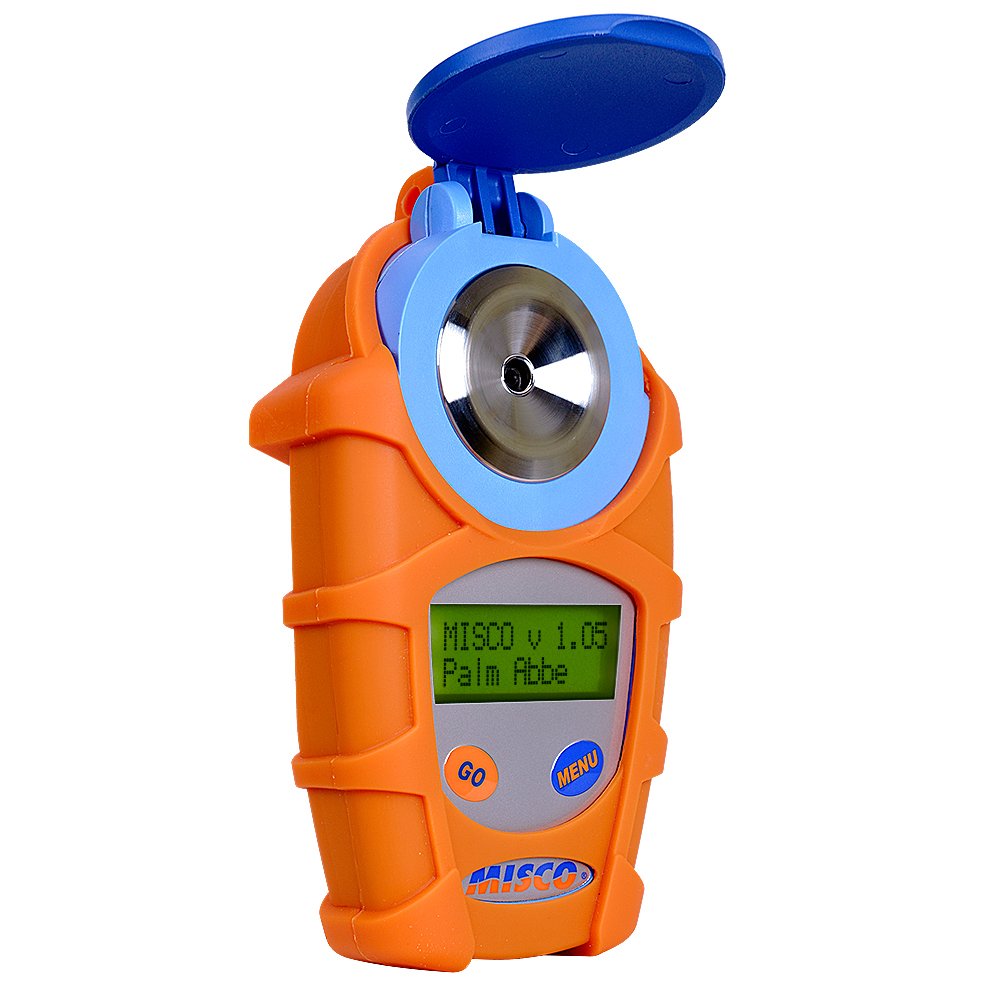One of the main requirements of having a reef tank is to change its water on a regular basis. It means preparing the saltwater mixture for your reef tank every once in a while. It is essential for reef tanks because it removes wastes from the tank water and refills the water with elements that are necessary for the survival of the tank inhabitants.
To mix saltwater for your reef tank, you need a container, enough water & salt, and a device for measuring the water’s salinity. You will also need a powerhead to aerate and a heater to heat the water.
To give you a solid idea of the entire process, I will explain it in the following discussion. Hope you will find it useful.

What If You Don’t Change The Water Regularly?
Regular water change is an important requirement because it is directly involved with the well-being of the tank inhabitants.
Irregular water changes can increase the amount of harmful chemicals, decrease the vital elements of the tank water, and thus, hinder the growth of your fish and other animals. They may even become sick living in polluted water.
Unlike freshwater, saltwater replacement is costly as it involves buying reef salt and mixing it prior to the water change. To minimize the cost, reefers install protein skimmers, which is an excellent option to reduce the frequency of water change in saltwater tank.
But protein skimmers don’t completely eliminates the necessity of water change in a reef tank. So, to take care of your aquatic pets, it is mandatory that you change your tank water regularly by preparing saltwater for your reef tank.
How About Buying Saltwater From Local Fish Stores?
Now that is an option you’d prefer to preparing saltwater on your own. It is not bad but I would not recommend it. Because apart from its benefits, there are uncertainties involving the water quality.
You do not have any idea about how the saltwater was prepared, do you? What if the filter system of the store is not maintained properly? In that case, there is a high chance that the water is polluted by excessive phosphates, nitrates, and other wastes.
Moreover, you should know that not every salt mix is appropriate for a reef tank. If the store you want to buy saltwater from uses or changes its salt mix that is unsuitable for your reef tank, there will be unexpected consequences. The same will happen if the store has an all-fish-aquarium and you have fish and other animals in your tank.
That is why it is always better to prepare saltwater on your own than buying it from fish stores. In that way, you can mix fresh saltwater knowing it will suit your tank and have no negative effects on its inhabitants.
So, How Do You Mix Saltwater For Your Reef Tank?
The good news is that mixing saltwater is not much of a difficult thing to do. You just have to confirm that the process is correctly followed. Here goes the drill!
1. Get The Necessary Equipment First
You must have the perfect equipment for mixing saltwater. Here, the equipment is a big container that will keep at least 10% of the water volume of your tank. One type of container that is widely used in this process is a food-grade trash can. The can is used with caster wheels because they make it easier to move the can.
You can also get aquariums or other types of plastic containers. Just make sure to get a container that is either food-grade or suitable as a portable container of water. If you use containers made of lower grade plastic, it may leach different harmful chemicals into the saltwater.
2. Fill The Container With Water Now
Now that you are ready with your container, fill it with fresh RO/DI water. Use as much water as you need to make the water change. It is even better if you take extra few gallons in case something unexpected happens.
3. Aerate The Water
You will need a powerhead to aerate the water. It will remove the excess amount of CO2 from the water. You will also need an aquarium heater so that the temperature of the fresh water matches with the reef tank’s temperature. Also, grab a thermometer to measure the water temperature.
As you have filled the container with water, drop the powerhead in it to do its job. Add the heater and get the water heated up to the temperature of your tank water.
4. Add The Salt Mix
The main part of the process starts now. You have to add the salt mix. But before you do that, read the instructions for the salt mix you are using carefully. Figure out how much salt you will need to match the salinity of your tank water.
Following all the instructions strictly is important because each salt mix is unique and so the instructions will vary. But the basic point is common for all – you should use enough salt to reach the chosen level of salinity. For any reef tank, the specific gravity should be kept at 1.023 to 1.026.
Here, I am going to talk about the process with a specific salt mix as an example so that it becomes easier for you to understand.
If you use Brightwell Aquatics Salt Mix (NeoMarine) for your reef tank, you will need a half cup of salt for every gallon of freshwater. It will provide a salinity level of 1.025 specific gravity.
So, if there are 20 gallons of water to mix salt with, your optimum salt amount will be 10 cups in total.
When you have calculated the salt amount, mix it slowly with the water in your container. Do not get tensed if the water becomes clouded while you are adding more salt mix. It is very normal and it will clear up. Keep mixing the salt for a few hours.
5. Measure The Salinity Level
After mixing the salt for some hours, you will have to measure its salinity to see if you have reached the optimum level. It is recommended that you use a refractometer to measure the salinity level because it provides accurate results. You can also use a hydrometer but it needs regular calibration as it may lose its accuracy over time.
Once you reach your desired level of salinity, let the water keep mixing and aerating for some time. How much time you need to keep it going like that depends on the instruction of the manufacturer.
Some salt mixes require 3 to 5 hours whereas others require 12 to 24 hours before you start using the water. Some require even more than that. In that case, it is safe if you give it 48 hours.
If you do plan to take 2 days, it is better to start the process at least 2 days before the scheduled water change.
My Favorite Refractometers: Editors Choice
Best Handheld Refractometer

Best Digital Refractometer

What If You Want To Store Mixed Saltwater?
That’s a great idea. Because it saves you from the hassle of preparing saltwater for a specific period of time. But for exactly how many days can you store it?
According to different tests regarding this issue, it has been shown that one can store mixed saltwater either cold or heated for 3 weeks at least without any harmful side effects.
Many aquarists say that they can go months with stored saltwater when they heat it, keep it in a food-grade container, and seal it off with a lid.
It is important that you seal off the container with a lid even if you do not heat it or keep it in a food-grade container. Otherwise, the salt mix will draw out moisture from the air and become a hard rock soon.
Final Words
See? The process is quite easy if you just follow the instructions properly!
Besides, it saves you from the struggle of carrying water containers to and from the local fish store. It is also the better choice as it keeps the tank inhabitants safe by ensuring the consistency of the water parameters in your tank. Good luck with your saltwater preparation!
